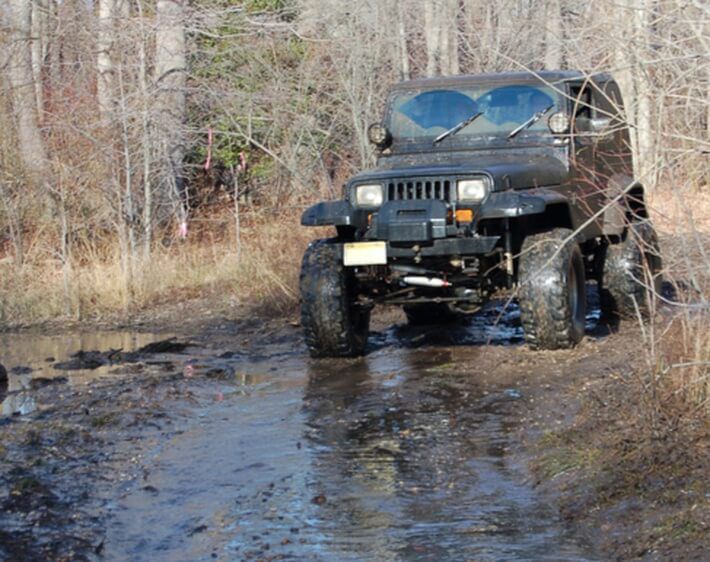You know your truck or SUV has four-wheel drive (4WD), but do you know how to use it? It’s time to get the most out of your ride and have fun doing it! When you know how to use 4WD, you can take on the toughest on-road and off-road conditions, from deep snow to steep mountains.
4 Wheels of Power
Before we drive further into 4WD, let’s first explain what it is.
Four-wheel drive, also known as 4x4, enables all four wheels of a vehicle to get power from the engine (either part-time or full-time), thereby improving traction and steering control. Other vehicles are front- or rear-wheel drive, which means power is transferred to the front or rear wheels.
Four-wheel drive is generally ideal for rough roads, snowy conditions, and other off-roading scenarios. Typically, only off-roading enthusiasts need 4WD, although 4WD can help with heavy-duty towing and hauling.
A vehicle equipped with 4WD usually offers three modes: 4H, 4L, and Auto. Here’s when you should—and should not—use these modes.
4H (High)
When your 4WD system is set to 4H, you can drive fast, but not too fast. Most automakers suggest keeping the speed at 55 MPH or less. With 4H, you gain more traction on icy, snowy, muddy, and rocky roads.
For instance, you might want to shift into 4H if you’re driving on a snow-covered road that leads to a ski resort. Typically, you’ll switch to 4H mode more often than 4L mode.
4L (Low)
In 4L mode, you should slow down, not speed up. Turn to 4L when you’re trying to get your vehicle out of a tough spot, such as moving through an extremely muddy creek bed, going up and down rock formations, splashing through water, or motoring through heavy sand. Think about it this way: When you need maximum traction and power, low and steady wins the race!
Auto (Automatic)
Auto mode delivers a hybrid of four-wheel drive and two-wheel drive.
When set to Auto 4WD, your vehicle will automatically switch from 2WD to 4WD when needed. In 2WD mode, the vehicle will send power to either the front or rear wheels. If the system detects road conditions that require 4WD, like a slick, treacherous slope, it’ll shift automatically to 4WD. Power then goes to all four wheels, alternating between the front and rear axles to match driving conditions.
Rules of the 4WD Road
The chief rule of the 4WD road? Use it or lose it. Your 4WD system will deteriorate if it goes unengaged for a long period of time. Seals will dry out and gears will get sticky. Engage your 4WD every few months to keep it in working order.
- Don't use 4WD on dry pavement. Avoid engaging 4WD when driving on flat, dry road surfaces. Your fuel efficiency will take a hit, along with your drivetrain.
- 4WD does not help you brake. Be careful! You will not gain braking ability or stability when braking through turns with 4WD. 4WD often contributes to overconfidence in drivers and can lead to accidents.
- Follow your vehicle manufacturer’s instructions for 4WD. Improper use of 4WD can break the front axles, shear the differential gears, and break apart the differential case (differentials give power to your wheels and allow them to rotate at different speeds). Car lingo aside, refer to your owner's manual for 4WD guidance related to your specific make/model. The process for engaging and disengaging 4WD varies from vehicle to vehicle.
Keep your SUV or pickup in fighting—4WD-ready—form with regular maintenance and repairs at your local Tires Plus. Stay on top of your manufacturer-recommended service schedule and make an appointment today!



